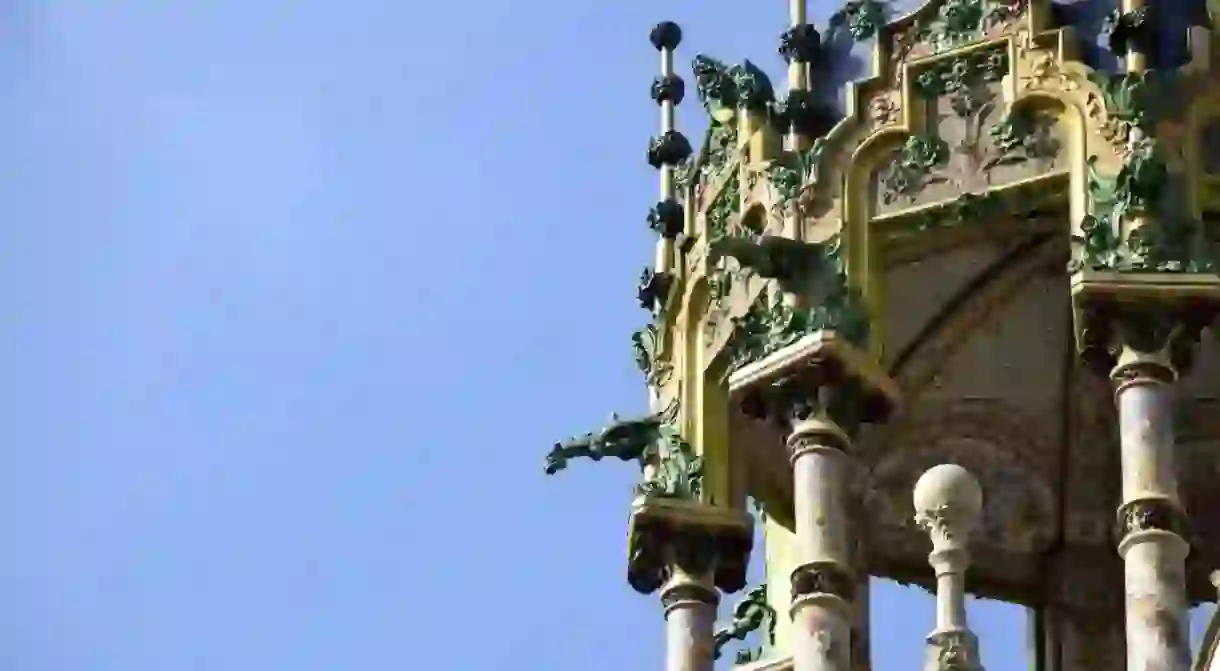What Is Catalan Modernism and Why is Barcelona so Famous for It?

You don’t need to be an architecture buff to realise that so-called Catalan modernism, or Modernisme, is a big thing here in Barcelona. From the Sagrada Família to the Palau de la Música and a myriad of less well-known buildings across town, this is perhaps the architectural style which best defines the Catalan capital’s undeniable aesthetic appeal.
A historic cultural movement with a Catalan twist
Catalan modernism, or Modernisme in Catalan, is a cultural movement which appeared at the end of the 19th century, around the time of the Industrial Revolution. While it has a lot in common with other cultural movements of the period, such as Art Nouveau, it is also greatly tied to the specific context of Catalonia and Barcelona at this time.
Historically, Catalonia has been the industrial powerhouse of Spain, and the turn of the 20th century was a time of great affluence and change in the region. The city was undergoing rapid transformation as people moved from the countryside to the city in hope of finding work in the newly opened factories. As a living conditions deteriorated, the local authorities were urged to take action and decided to give the city an extension – eixample in Catalan – giving rise to the large, grid-patterned neighbourhood of the same name.

At the same time, inspired by the wave of change taking place across Europe, a cultural movement emerged which had at its heart a desire to make Catalan society a modern society, and there was an element of Catalan nationalism at the heart of the movement as well. Rejecting bourgeois ideals, traditionalism and the old guard, the movement gathered momentum in artistic circles, among poets, writers and artists, but also with those who wished to take a more hands-on approach to this new vision for society.
Barcelona as a testing ground
In 1888, for the occasion of the Universal Exhibition, architect Lluís Domènech i Montaner unveiled his building Castell dels Tres Dragons, a design widely held to mark the beginning of Modernisme as an architectural current. As the expansion of the city rolled ahead, the Eixample became the testing ground for this new architectural current.
Somewhat ironically, perhaps, it was the bourgeoisie itself who commissioned many of the new modernist designs as luxurious town houses in areas such as the Passeig de Gràcia. In fact, part of the Eixample has today been nicknamed the Quadrat d’Or, or ‘golden block,’ because of the concentration of fabulous modernist mansions in the area.

If each architect developed their own particular style, some common traits of Catalan modernism include a preference for asymmetrical shapes and those which replicate the natural world; curved lines are preferred to straight lines. Nature, too, is a source of inspiration in terms of the themes which can be found in the details of facades, murals and features such as windows and balconies: leafs, trees, flowers and animals are most common. Altogether, Modernisme is highly ornate, with much focus on aesthetic details.
Antoni Gaudí, Modernisme’s golden boy
If these days Barcelona is famous for its modernist architecture, this is undoubtedly in part thanks to the work of one man in particular, architect Antoni Gaudí. His designs, more than anyone else’s, have become some of the biggest tourist attractions in the city and have even been awarded UNESCO World Heritage status.

Gaudí’s most celebrated work is the mesmerising Sagrada Família, a Roman Catholic church in Barcelona which has been under construction for over 100 years. When it is completed – hopefully within the next 10 years – the church will be highest building in the Catalan capital. Other of his notable works include the Casa Batlló, nicknamed the house of the dragon, and La Pedrera or ‘the quarry,’ so named because of its rugged appearance.

Other architects, such as the aforementioned Lluís Domènech i Montaner, and Josep Puig i Cadafalch, were also pioneers of Catalan modernism and left their mark on the city. The Palau de la Música Catalana is a stunning example of Modernisme, with its stained-glass windows, natural motifs and colourful mosaic work.
Together, these buildings form the legacy of a cultural movement which is deeply rooted in Catalan history and continues to shape the character and eternal appeal of Barcelona as a cultural and artistic capital.













